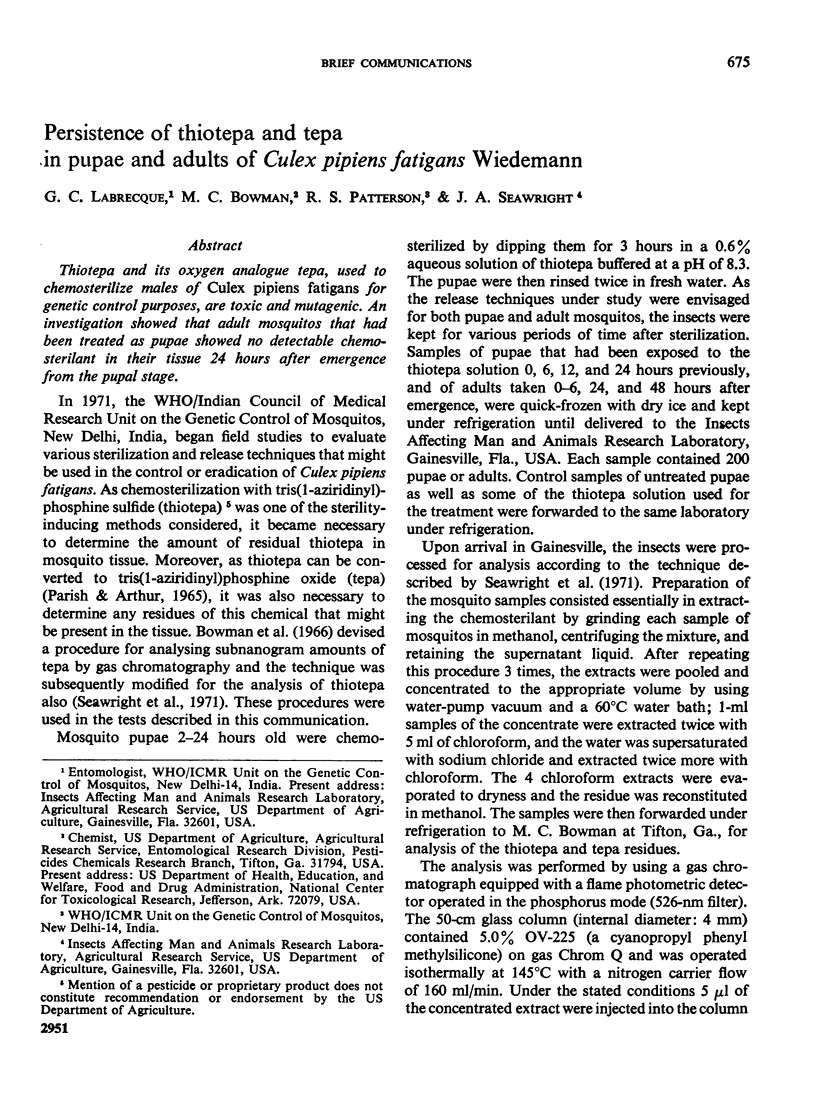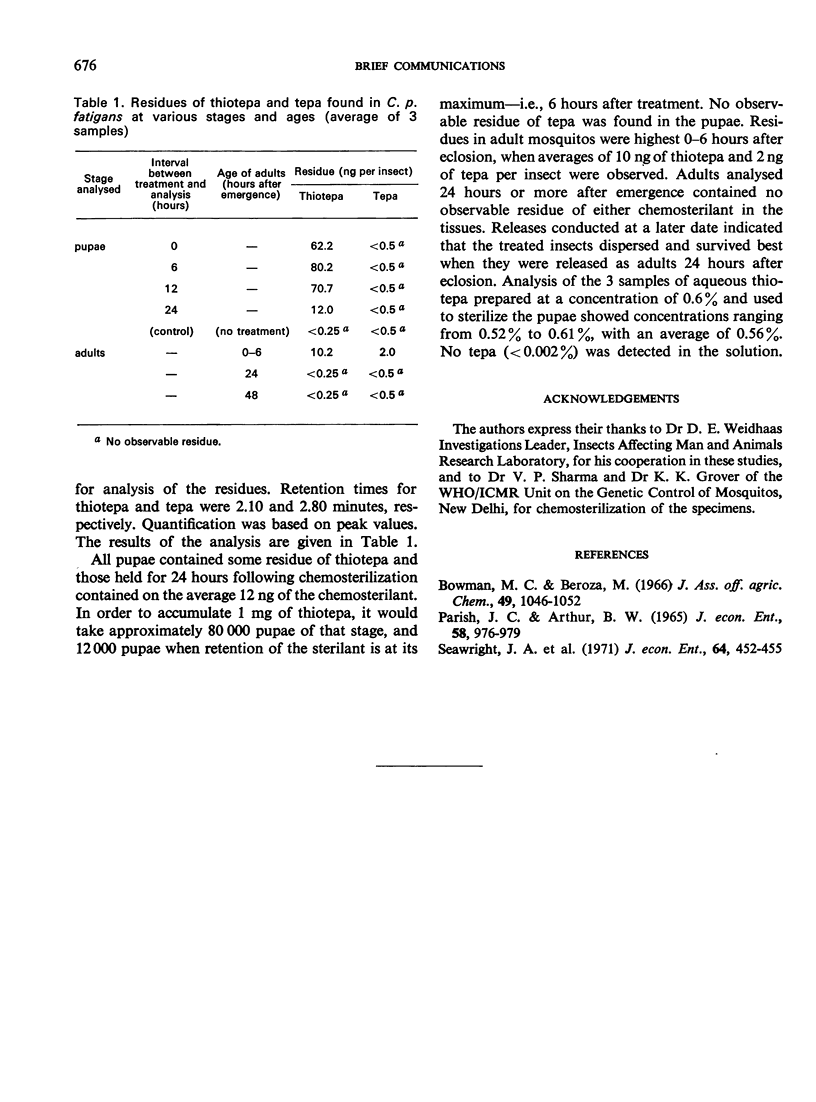Abstract
Thiotepa and its oxygen analogue tepa, used to chemosterilize males of Culex pipiens fatigans for genetic control purposes, are toxic and mutagenic. An investigation showed that adult mosquitos that had been treated as pupae showed no detectable chemosterilant in their tissue 24 hours after emergence from the pupal stage.
Full text
PDF

Selected References
These references are in PubMed. This may not be the complete list of references from this article.
- Parish J. C., Arthur B. W. Mammalian and insect metabolism of the chemosterilant thiotepa. J Econ Entomol. 1965 Oct;58(5):976–979. doi: 10.1093/jee/58.5.976. [DOI] [PubMed] [Google Scholar]


